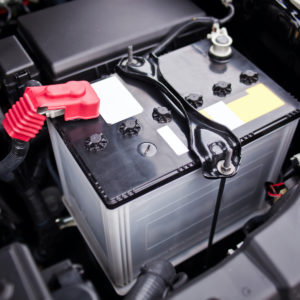Have you ever gone out to face a biting winter day, got behind the wheel, and found that your car simply would not start? You’re not the only one to encounter this problem.
Cold weather and your car battery don’t mix well. Dead car batteries in winter are a surprisingly common issue, and it’s one that many vehicle owners brace themselves for once the cold season rolls around.
Today, we’ll be looking at the common causes behind these dead winter car batteries and what you can do to prevent the same from happening to your car battery.
Why Does Cold Weather in Winter Kill Car Batteries?
Before we look into solutions, it’s important to understand why car batteries tend to die in cold weather. These reasons can range from chemical reactions to regular winter driving behaviors. Here are the main reasons you might find your car battery dead from the cold:
Oil Thickens When It’s Cold
The cold winter weather makes it more difficult for the engine to turn over and start. This is mainly because engine oil thickens at lower temperatures. As a result, the engine draws more power from the battery upon ignition.
The process can be hard on car batteries, especially those that are three years old or older. If you have an older battery and you notice that it dies frequently during winter, it’s likely time to change it.
Power-Hungry Car Features
Going out in the winter can be a bother, as you have to contend with the snow and the cold. Fortunately, your vehicle cabin offers a nice toasty refuge that you can rely on to keep you warm as you drive about. But you see, that might be exactly why your vehicle’s battery is struggling.
Driving in winter means using winter-centric vehicle accessories and related systems. Heaters, seat warmers, defrosters — these all deplete battery charge faster than usual.
While your vehicle’s alternator should be able to keep its battery powering these systems, an already-drained battery will struggle. In addition, if you turn some of these systems on before you start the engine, the alternator won’t charge the battery at all. As a result, the battery will lose charge.
Warming Up Difficulties and Power Loss in Cold Weather
Most car batteries are lead-acid batteries, which rely on a chemical reaction to have a charge.
Heat speeds up the chemical reaction, while cold temperatures slow the reaction down. The battery’s ions are simply less mobile when it’s cold, which cuts a car battery’s ability to generate power. Some batteries lose up to 60% of their strength in winter’s freezing temperatures.
It takes longer for a car battery to warm up in winter too, leading to a sluggish feel whenever you use it. The battery’s attempts to warm itself up can also drain it, especially during short drives where it doesn’t have enough time to warm up fully and recharge itself from the alternator.
Protecting Your Car Battery from the Winter Cold
So now that you know what causes a car battery to die in winter, let’s look at how to protect your car battery. Prevention will save you a lot of headaches in the long run. After all, you don’t want a dead battery if you’re rushing somewhere important. If these tricks keep your battery from dying completely, they might also save you some money.
Buy the Correct Winter-Ready Battery
Batteries have a cold cranking amps (CCA) number that corresponds with their ability to function well in cold temperatures. The higher the number, the better the battery does in winter climates.
The correct CCA for your vehicle will vary depending on your vehicle’s type and its engine size.
Small vehicles generally need batteries with 350 to 400 CCA, while medium vehicles need batteries with 400 to 600 CCA. Large vehicles or trucks are best suited for winter when they have batteries of 600 to 900 CCA.
Park Indoors and Cover Your Car Overnight
If possible, it’s always best to park your vehicle indoors. Even an unheated garage will help protect your vehicle and its battery from the cold. You can also cover your vehicle overnight to lock in heat and protect it from ice.
If your vehicle’s battery starts at a warmer temperature, it won’t struggle as much warming up. In addition, the oil in the engine will be less thick, meaning your vehicle’s engine won’t need as much power from the battery to start.
Avoid Using Electric Accessories Before Starting the Car
We’ve mentioned how your vehicle’s electric winter accessories can drain your battery. It’s not just them though. Your vehicle’s other electric accessories, like the radio or entertainment system, can also drain the battery if your vehicle isn’t running. It’s best to start the vehicle before turning all these features on.
Use a Battery Blanket
A battery blanket wraps around a battery and warms it to the optimal temperature. This helps extend the battery’s life and keeps it at the optimal temperature. The battery blanket is useful, especially in areas with heavy winters.
Take Longer Drives
Finally, we recommend taking longer drives in winter to keep your vehicle’s battery all charged up. Avoid going on shorter drives or drives with frequent stopping and starting.
Remember that your vehicle’s battery needs time to recharge through the alternator, which only runs when the engine is running. So take your vehicle out on long drives now and then when you can.
The winter season takes cold weather battery problems to a whole new level. Make sure you know all you need to about keeping your car battery alive during the chilly season.
Any information provided on this Website is for informational purposes only and is not intended to replace consultation with a professional mechanic. The accuracy and timeliness of the information may change from the time of publication.































